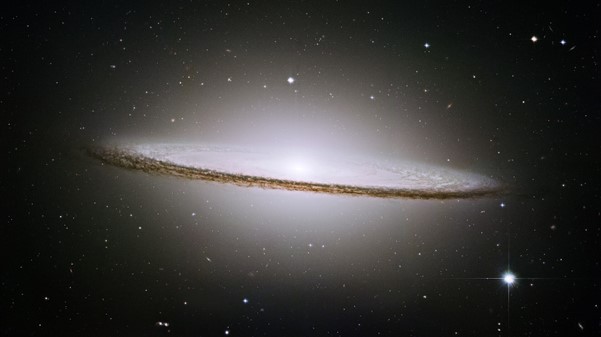

What's Up? April 2024
Spring has sprung and it's an exciting time of year for our astronomers. Rosie takes us through what we can see in the skies this month.
Spring has sprung! Hear the birds chirping outside your window, the bees buzzing in the garden, and the worms worming their way up to the topsoil. Finally, the UK is thawing out (perhaps it needs a bit of a wring-out as well). As the nights are getting warmer, and finger’s crossed clearer, perhaps it’s a good time to try some stargazing. Let’s see what’s in the sky in April!
Constellations and Deep Sky Objects
To astronomers at Kielder Observatory, the sign that spring is here is the constellation Virgo. She starts to poke her head up in March and is a prominent figure in the night sky by the time April comes around. This month, she will be rising in the south-east at around 21:00. Virgo is one of the constellations of the zodiac, located on the ecliptic plane between Leo and Libra. In mythology Virgo is a virgin maiden and is associated with wheat. In Greek and Roman mythology, the constellation is related to Demeter, the Greek goddess of the harvest, or her daughter Persephone, queen of the Underworld.
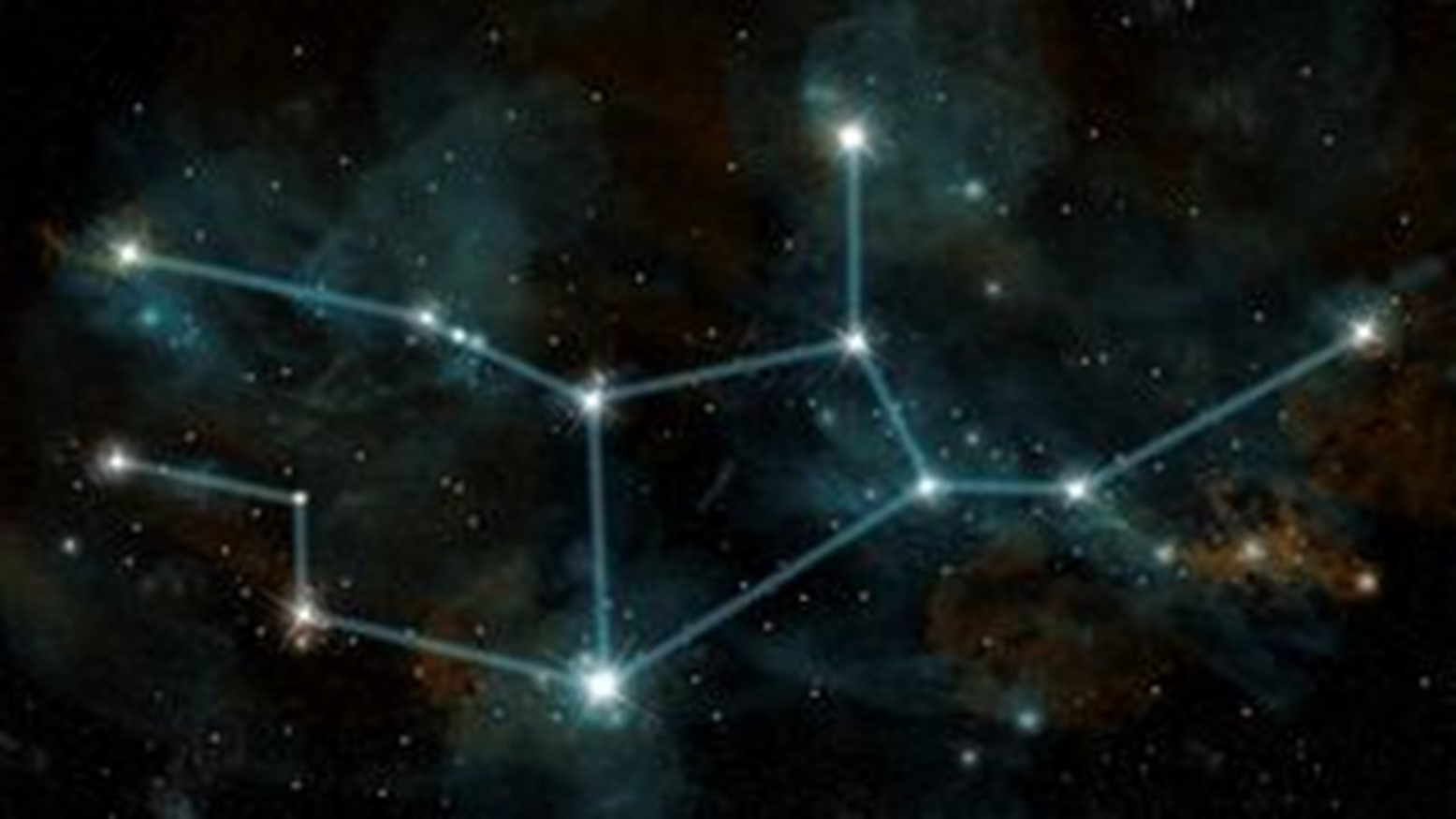

Top: Virgo Constellation (Marc Ward/Stocktrek Images via Getty Images)
Bottom: Virgo Illustrated card (Science Photo Library V700/0192)
Try and find the bright star Spica within Virgo, it’s on the right hip of the constellation (her left). It forms part of the Spring Triangle asterism which is made up of Spica in Virgo, Arcturus in the constellation Bootes, and Regulus in Leo.
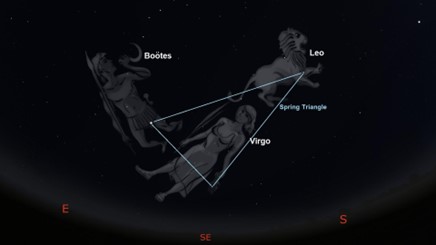
The Spring Triangle (Royal Museums Greenwich link)
For those of you with a telescope or a pair of binoculars, the Sombrero galaxy is an extremely interesting object to find! You can locate it near the star Spica in Virgo. It has an extremely large and bright central bulge and a prominent belt of dust round the edge obscuring the light coming from the centre (called a dust lane). This makes it look like a sombrero... hence the name.

Sombrero Galaxy (NASA/ESA Hubble Space Telescope)
To the left of Virgo, we have the constellation Serpens, in which there is a bright globular cluster called M5 or the Rose Cluster. In very good conditions, this cluster is just about visible to the naked eye. If you have a pair of binoculars or small telescope you’ll be able to see a bright spot in the sky. Larger telescopes will be able to resolve individual stars.
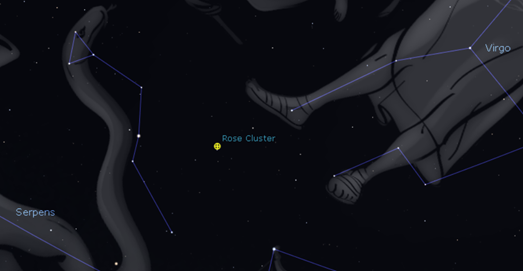
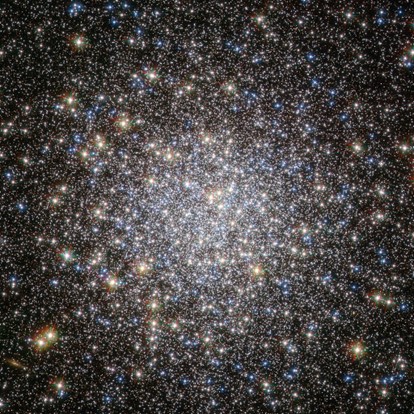
Top: Rose Cluster in constellation Serpens (Stellarium)
Bottom: Rose Cluster (NASA/ESA Hubble Space Telescope)
Planets
It’s a quiet month for the planets. The only one you’ll be able to catch is Jupiter (and with a telescope, Uranus), just as the Sun is setting at around 20/21hr in the west.
Comets & Meteor showers
We have the Lyrids this month - a meteor shower happening between the 16th – 30th of April. The peak of the shower will be between the 22nd-25th. Typically, you might see somewhere from 10-15 shooting stars per hour! The Lyrids is one of the oldest known meteor showers, we have records of its sighting from 687 BC by Chinese astronomers. The shooting stars of the Lyrids come from the tail of comet C/1861 G1 Thatcher. This is a long-period comet taking 415.5 years for it to orbit the sun once.
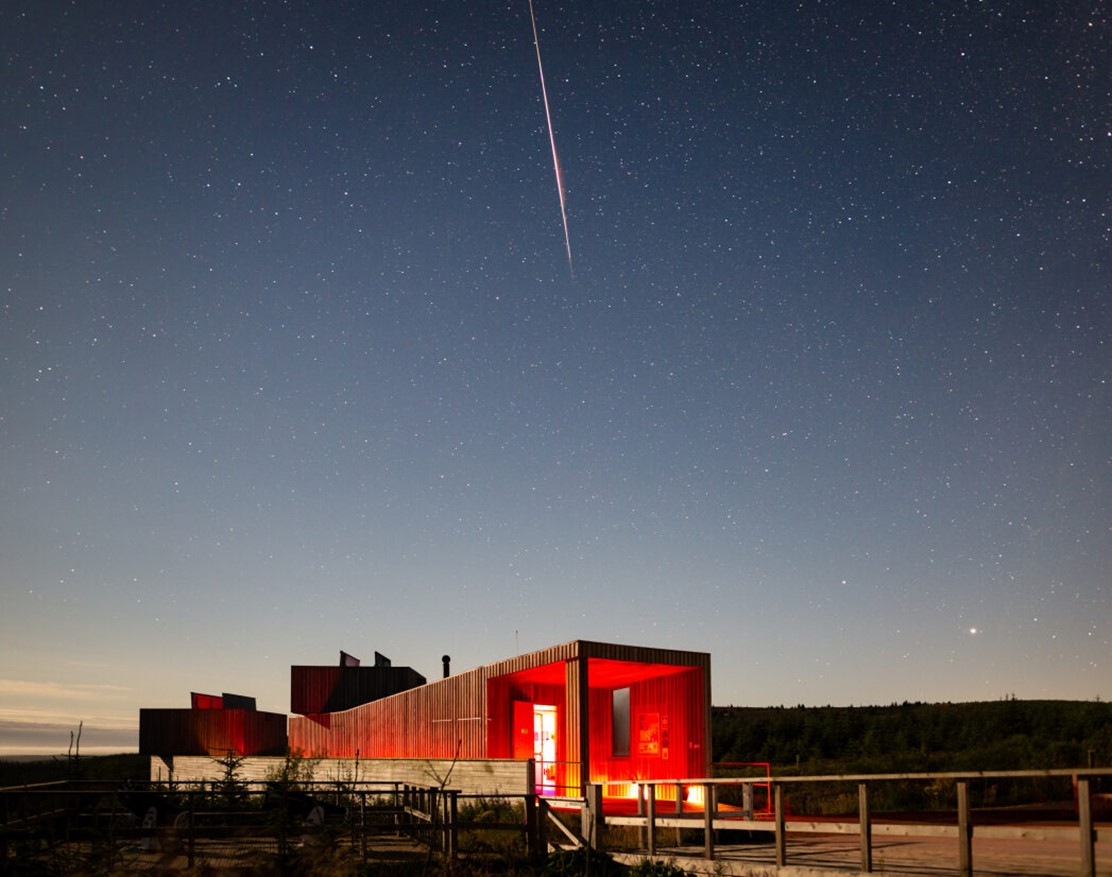
Comet 12P/Pons Brookes which you may have already heard of or even seen is reaching perihelion this month. It’s closest approach to earth will be in June, but you might just see it with your naked eye in April. It will be passing through Aries and Taurus, so keep a look out!
Special mentions:
Although not visible in the UK, there will be a total solar eclipse on the 8th of April that I just couldn’t not mention! Only visible in the Americas sadly, but our astronomer Ellie will be over there recording the whole thing (weather permitting) so keep an eye out for any mention of livestreams and updates on our social media!
Moon Phases
Remember, deep sky objects such as nebula and galaxies are best seen around new moon. The full moon in April is called the Pink Moon, as it symbolises the beginning of Spring.
Last quarter: 2nd April
New moon: 8th April
First quarter: 15th April
Full moon: 24th April
















